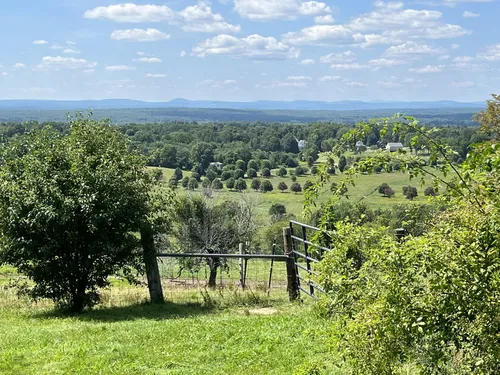
Historic paths woven through the fabric of Groton, Massachusetts, offer an inviting exploration of nature’s beauty and the town’s rich heritage. Nestled in Middlesex County, Groton boasts a plethora of hiking trails that not only showcase stunning landscapes but also beckon a deeper engagement with history and our collective past. Below are five exceptional trails that promise a shift in perspective, appealing to the curiosity of both the seasoned hiker and the casual wanderer.
1. The Nashua River Rail Trail
Extending approximately 12.5 miles, the Nashua River Rail Trail is a remarkable conversion of a former railway into a multi-use path. The juxtaposition of nature and history is palpable as hikers traverse the trail, which runs from Ayer to Nashua, New Hampshire. Scenic vistas punctuate the pathway, revealing harmonious views of the Nashua River and surrounding wetlands.
Historically, this rail corridor was integral to the economic development of the region, facilitating the transport of goods and fostering connections among neighboring towns. Today, the trail offers not only an inspiring hiking experience but also a glimpse into Groton’s transportation history. Interpretive signage along the route provides insightful commentary on the flora and fauna, as well as the historical significance of the railroad’s impact on the community.
Engaging in this hike invites a deeper appreciation of the balance between human industriousness and the environment. Hikers may find themselves contemplating the effect of transportation infrastructure on local ecosystems, thereby shifting perspectives on human interaction with nature.
2. The Groton Town Forest Trails
Spanning nearly 400 acres, the Groton Town Forest Trails present an opportunity to amble through a diverse natural landscape, encompassing pine groves, wetlands, and ancient stone walls. The trails meander through the woods, often flanked by impressive hemlock and oak trees. The serenity of this forested expanse encourages introspection and a reconnection with the natural world.
Echoes of Groton’s past resonate throughout the forest, as remnants of old farms and historic roadways surface amidst the underbrush. These trails are not merely conduits for physical activity; they are pathways to understanding how land use has evolved alongside the town’s growth. The forest is a living testament to the cycles of nature and human history, offering insight into sustainable practices that respect the environment.
For those looking to delve deeper, the Groton Forest Commission organizes educational programs that illuminate the ecological and historical dimensions of this woodland. Such initiatives foster a greater awareness of the delicate interplay between human and natural systems, prompting hikers to reflect on their role within this intricate web.
3. The Lost Lake Trail
The Lost Lake Trail is a beautifully tranquil route culminating at the shores of the eponymous lake. This moderate trail, about 2.5 miles in length, provides a scenic escape and is especially captivating during the autumn months when the foliage transforms into a veritable tapestry of reds and golds.
As one wanders along this peaceful path, the history of Lost Lake as a recreational area comes into focus. Established in the early 20th century as a summer retreat, it is now a cherished local resource for swimming, fishing, and kayaking. The surrounding area contains a rich legacy of leisure culture, where families have gathered for generations. Trailfinders are likely to encounter various species of wildlife, all contributing to the symbiotic relationship between the lake and its visitors.
Walking the Lost Lake Trail allows hikers to immerse themselves in a microcosm of local heritage while enjoying the meticulously preserved natural scenery. It is an opportunity not just for physical exertion but also for a contemplative excursion into the region’s recreational history.
4. The Baddacook Trail
Adjacent to Baddacook Pond, the Baddacook Trail spans approximately 1.5 miles through a blend of open farmland and vibrant wetlands. This relatively easy hike offers an array of ecosystems to explore, along with abundant opportunities for birdwatching. Varieties such as herons and ducks find sanctuary in these wetlands, attracting avian enthusiasts and nature lovers alike.
The trail presents visitors with a unique lens into both natural and historical narratives. The surrounding farmlands provide clues to Groton’s agrarian roots, revealing how local agriculture has shaped the landscape and livelihood of its residents over generations. Interpretive signs dotted along the route elucidate the ecological importance of wetlands and the farming legacy of the area.
By walking this trail, hikers engage with the stories encapsulated within the land and discover the significance of wetlands as crucial habitats. The chance to witness the delicate balance of life in such spaces engenders a profound curiosity about environmental conservation.
5. The Heard Farm Trail
The Heard Farm Trail provides a rich exploration of Groton’s heritage as it navigates the historically significant Heard Farm site. This moderate trail, measuring about 3 miles in length, leads hikers through fields, woodlands, and alongside seasonal streams, offering an intimate experience of local history intertwined with natural beauty.
Originally a working farm in the 18th century, the site is now preserved for communal enjoyment and education. Archival photographs and plaques pepper the landscape, documenting the farm’s evolution and its role in Groton’s agrarian history. The trail is a reminder of the perseverance of local history and the importance of preserving such sites for future generations.
Walking the Heard Farm Trail offers an immersive revelation of how past practices in agriculture can inform contemporary sustainable methods. Hikers are likely to leave with a renewed understanding of the interconnectedness of human activity and natural ecosystems, provoking thoughts on how historical choices shape present realities.
In conclusion, Groton, Massachusetts, with its historical trails, beckons explorers to engage not only with nature’s splendor but also with the narratives that have sculpted this picturesque town. Each trail, imbued with historical significance, offers a unique opportunity to contemplate the delicate interplay between history and environment, urging hikers to take a moment to reflect on their role in the ongoing story of this remarkable landscape.